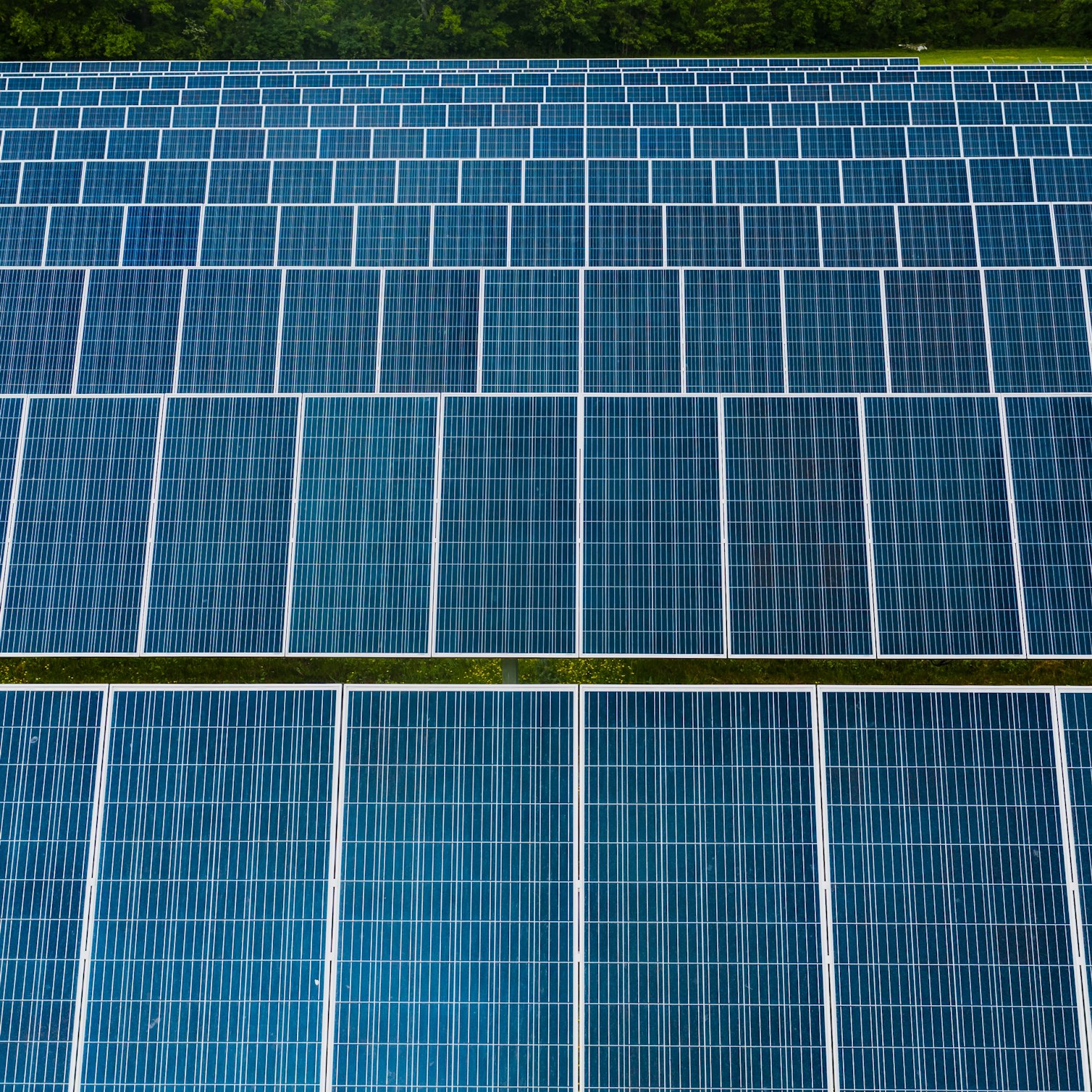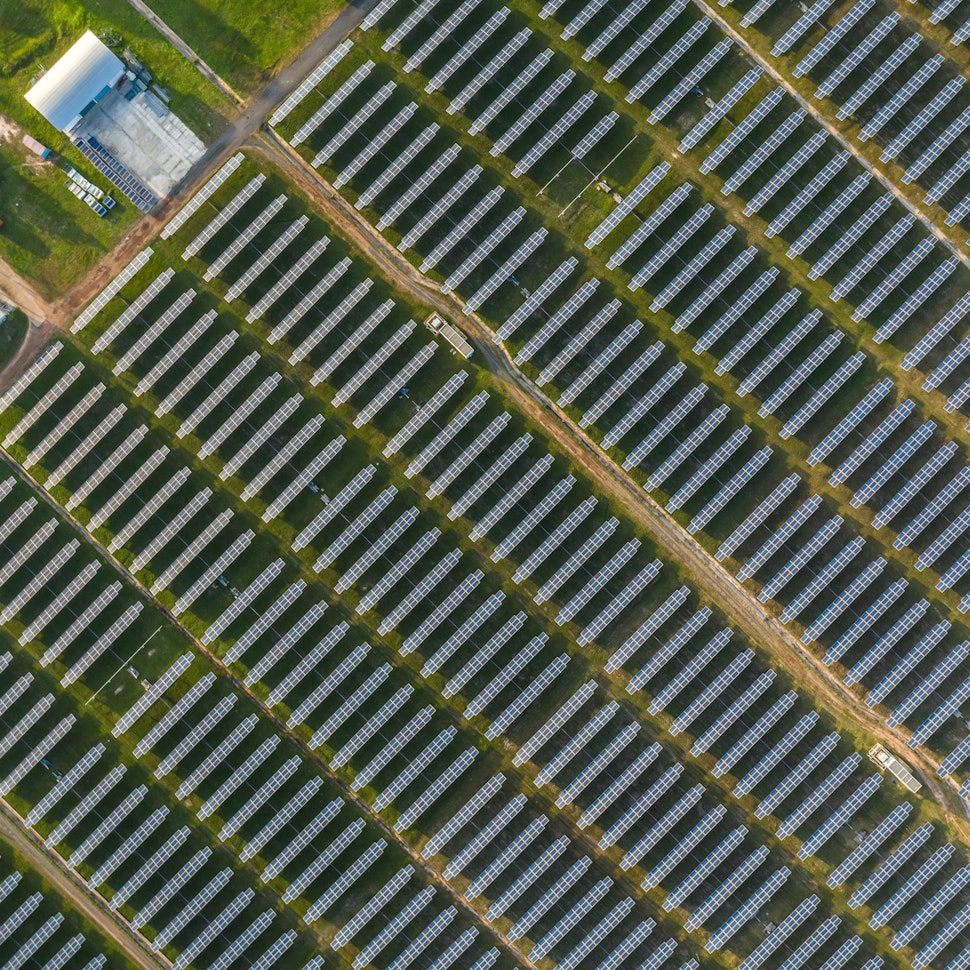- Solar energy blog
- What impact do the tariffs on Chinese solar panel imports have on the industry?
What impact do the tariffs on Chinese solar panel imports have on the industry?


Laura Rodríguez
Territory Manager Oceania & Nordics
Laura is a renewable and software industry sales professional, currently working at RatedPower as Territory Manager Oceania & Nordics. With a background in International Business and International Trade, Laura previously worked in the business strategy area in various companies as well as as a market analyst for the Government of Spain in Australia.

Content
An increase in trade tariffs on the import of solar panels produced in China into the US aims to support local production, but it could also challenge the country’s plans for widespread renewable energy adoption.
As China produces around 75% of the world’s solar panels, limiting the availability of panels for US solar developers raises project costs. An increase in utility-scale deployments while imports of panels from China remain low has pushed up prices for panels produced in the US.
What tariffs has the US enacted, and how are they affecting the solar market?

Explore the outlook for PV material prices in 2023 and how market factors have affected costs with this free eBook.
US tariffs target Chinese panels
Tariffs are additional duties or taxes that are imposed on goods produced abroad and imported into a country. They aim to protect domestic industries from foreign competition and address unfair trade practices, such as countries or companies that supply artificially cheap imports. The extra fees are typically passed on to customers, encouraging them to switch to buying goods from local producers instead.
In recent years, a trade war between the US and China has seen each country raise tariffs on imports from the other.
"Import relief continues to be necessary to prevent or remedy serious injury to the U.S. industry, and that there is evidence that the domestic industry is making a positive adjustment to import competition.”
In February 2018, the United States International Trade Commission (ITC) levied a 30% tariff on solar cells and modules imports into the US from China. The ITC concluded that China was subsidizing its solar equipment manufacturers unfairly and enabling them to dump solar panels on the international market at prices lower than the cost of production. The rate was scheduled to decrease by 5% annually to 15% in 2021.
In June 2019, the United States Trade Representative (USTR) granted an exemption from the tariff for bifacial solar panels as they are not produced in the US. The USTR attempted to withdraw the exclusion in October 2019 and April 2020 but was opposed by the Court of International Trade (CIT) and the exclusion remained in place.
In October 2020, then-President Donald Trump increased the tariff rate from 15% to 18% for its fourth year, revoked the exclusion for bifacial panels and directed the ITC to consider extending the tariffs beyond their scheduled expiry on 6 February 2022.
In November 2021, the ITC recommended that President Joe Biden extend the tariffs as it determined that import relief “continues to be necessary to prevent or remedy serious injury to the U.S. industry, and that there is evidence that the domestic industry is making a positive adjustment to import competition.” Biden is expected to approve the extension.
The US Solar Energy Industry Association (SEIA) report, which opposes the tariffs, found that the US solar industry had 62,000 fewer jobs in 2017-2021 due to the tariffs, $19 billion in lost investment, and 10.5GW of lost solar deployment. Prices for solar panels are 43-57% higher than the international average, raising solar energy prices for customers and weighing on demand.
According to US consulting firm Rystad Energy, domestic producers have not filled the gap while direct shipments of solar panels from China have fallen because of the tariffs. In 2021, US solar module production was projected to have totaled 5.2GW, compared to 27.8GW of imports, largely from Malaysia, Vietnam, Thailand, and South Korea.
In August 2021, an anonymous group of US-based solar manufacturers, the American Solar Manufacturers Against Chinese Circumvention (A-SMACC), filed petitions to the Department of Commerce to expand the tariffs to Chinese companies moving production of solar cells to Malaysia, Thailand, and Vietnam to circumvent the existing duties.
In September, a group of 12 US Senators wrote to the Commerce Secretary expressing concern that expanding the tariffs “would have a devastating impact on the U.S. solar industry and American solar jobs”. The Department of Commerce rejected the request in November on the basis that the names of the members should be identified publicly.
If you want to learn more about the renewable energy landscape and outlook in the US, check our State of Green US.
Some Chinese suppliers stopped signing US sales over concerns that they could be hit with retroactive tariffs.

How does the renewable energy landscape in China look like? Check it out in our State of Green in China.
US, Europe target forced labor with the import ban
In addition to the specific tariffs on solar panels and cells from China, on 23 December, President Biden signed the Uyghur Forced Labor Prevention Act. The law bans imports into the US of goods made by forced labor in the Xinjiang region in China, effective from 21 June 2022. There will be in effect a high burden for importers to demonstrate that goods from Xinjiang—or their components—were not made with forced labor.
China is not only the world’s largest producer of solar panels, but it has established a fully integrated supply chain and also produces almost all of the world’s polysilicon, which is a key raw material used in solar panels. Xinjiang is a key polysilicon production center in China. This is expected to further limit the availability of Chinese solar equipment in the US.
The European Commission President Ursula von der Leyen announced plans for a similar ban on imports into Europe of products made using forced labor in September. The European Union has had anti-dumping tariffs on imports of Chinese solar panels since 2014.
Supply chains shift away from China
In addition to the impact of tariffs in raising prices, changing supply chain trends are shifting towards local production. Concerns about the carbon footprint of imports from China into Europe or the US are prompting downstream buyers to look for suppliers located nearby.
And with the COVID-19 pandemic disrupting logistics, it has become more difficult to import products from China. Freight rates surged in 2021, on a combination of high demand, a lack of capacity, port congestion, and virus-related lockdowns. That has further driven customers to secure equipment from alternative, local suppliers.
Plan your solar equipment installation with RatedPower
Tariffs aim to foster the development of domestic manufacturing, but in the short term, tariffs on solar panel imports from China, the world’s largest producer, are raising costs for the solar industry. Logistics challenges are also contributing to the shift to local products.
Latest stories
Related posts
Market analysis
Power where it’s needed: Solving LatAm’s grid instability with distributed solar and storage
Find out how a bottom-up approach is solving LatAm’s grid instability, with community-led solar and storage projects giving people control over their energy.
Updated 29 DEC, 25

Market analysis
Powering through the peak: Why solar + storage is gaining momentum in MENAT
Discover how MENAT is building a functioning solar economy and why rising peak demand during extreme heat is squeezing its energy architecture.
Updated 11 DEC, 25


Market analysis
The rise of utility-scale PV + storage plants in Italy
Discover how Italy’s latest policies and auctions are driving utility-scale solar and battery storage projects to meet ambitious 2030 targets.
Updated 4 DEC, 25

- RatedPower
- Solar energy blog
- What impact do the tariffs on Chinese solar panel imports have on the industry?
 Watch a demo
Watch a demo Ask our AI Product Expert
Ask our AI Product Expert

